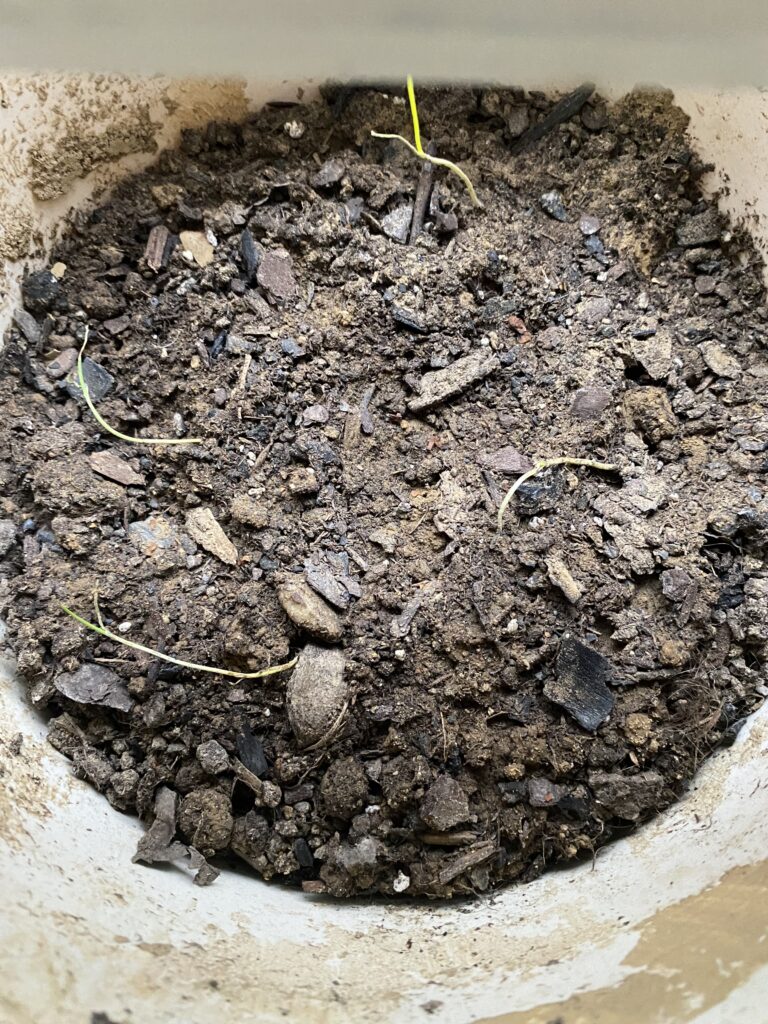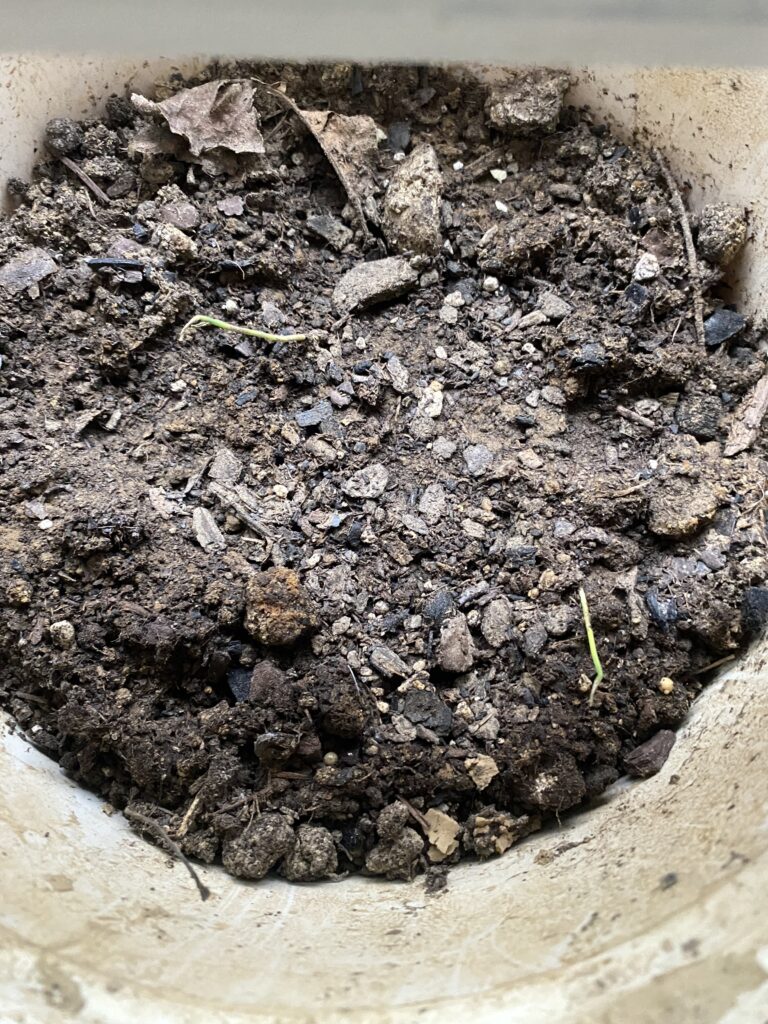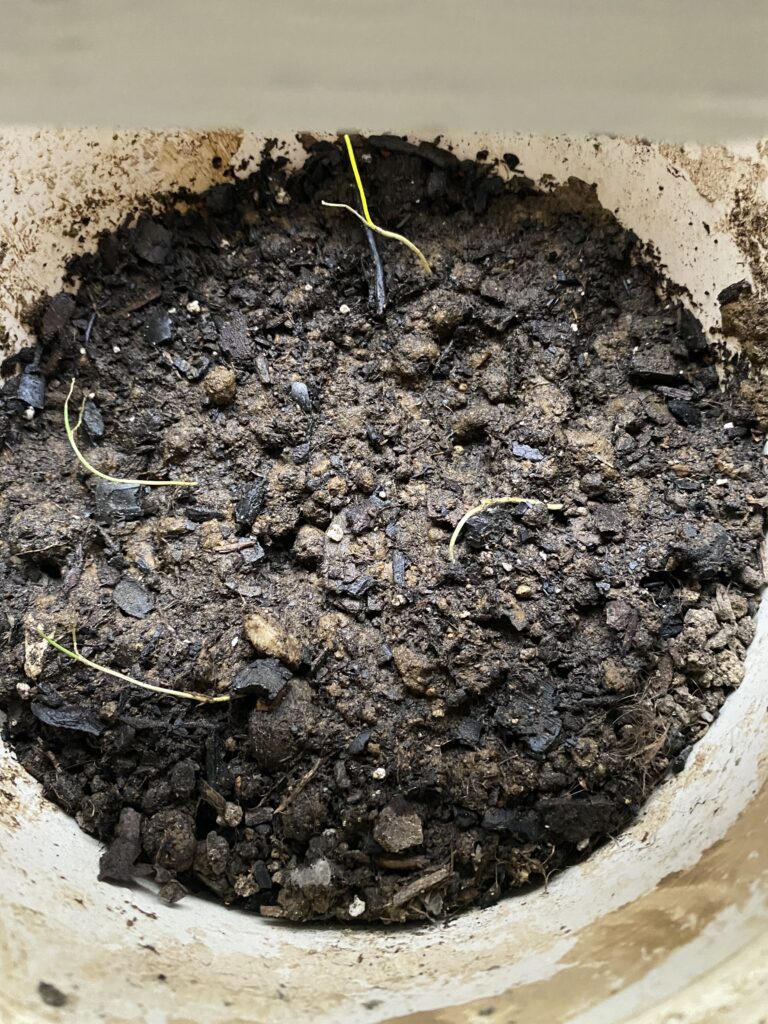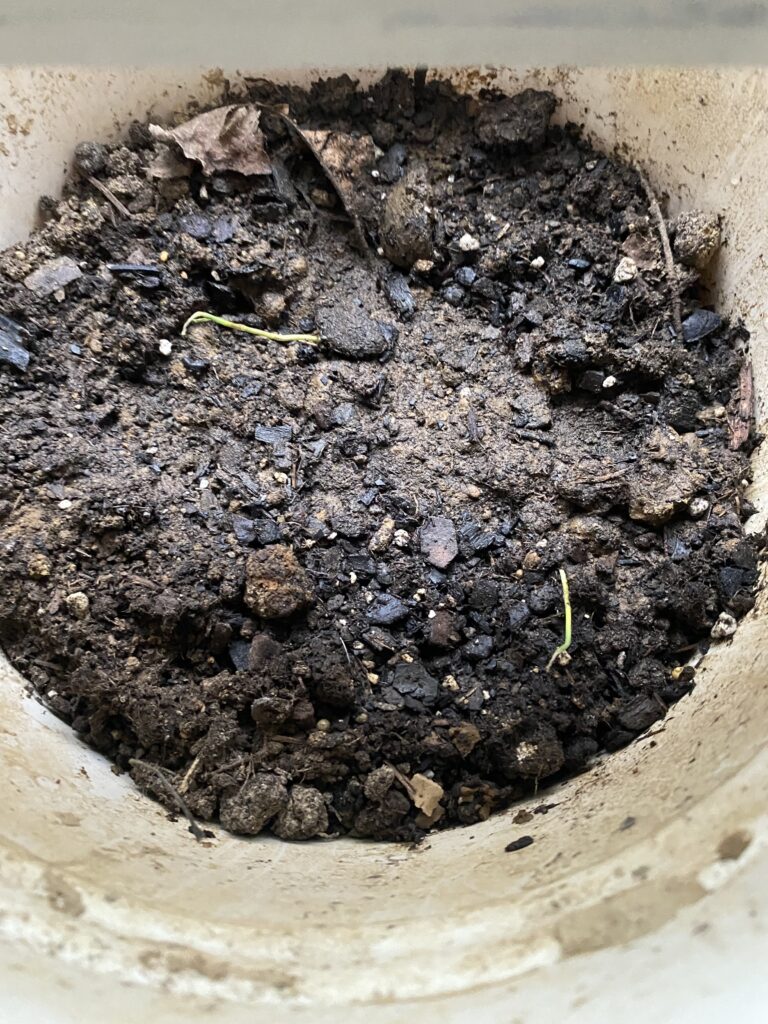#gardening #onionseedlings #coldstratification
In the pictures shown below, you can see from Yesterday on December 25 the comparison of before the pots took room temperature watering and after they took watering for the 3rd time.

The pot with 4 seedlings before watering. Pot was in the window instead of outside yesterday.

The pot with 2 seedlings before watering.
NOTES ON DRY POTS BEFORE WATER: At this stage, I could see that the pot was extra dry so this must mean that there isn’t really much moisture below and if any, its relatively unhealthy to keep trying to water these as they are well known to be a cold stratified vegetable. Because I am keeping them inside at night in a moderately warm room would be the only reason I plan on watering them during a cold stratification phase in the gardening world.
Two pots after watering

The pot with 4 seedlings after watering.

The pot with 2 seedlings before watering.
NOTES ON POTS AFTER WATER: I noticed that they took more of a neon color, or in other terms just more of a brighter color than the dry but they took it quickly so that was a good sign to me I was right about water usage. If the plants don’t need water, they can end up remaining looking the same color as they were dry. Which goes into the final stage of plants as well, if you keep adding water not much will change for the color of the leaves but will ruin your harvest.
General Consensus of watering during cold stratification periods
Some people call it winter sowing, and that’s one of the biggest reasons that I captured these Walla Walla onion seedlings outdoors way after a week or so of below freezing temps, etc. I don’t have any other seeds going at this time, but do plan to get out there when it goes back near the 50’s and rake the ground to start garlic and also yet surprisingly, Cole crop seedlings that will come up in spring to make an easy transplant and a quick root growth for all seedlings. In terms of watering them, interestingly enough that is not the point during cold stratification phase. Much of the moisture in the air, in the ground and from snow and rain during the season can easily provide enough for you to leave the seeds outside, which will survive and begin to come up when the soil heats up. Not all plants are able to do this with seeds, like tomatoes or peppers, and even more summer crops. So will I water these often, and should I leave them outside instead of messing around with them in the house?
Definitely not going to water often, its similarly like a seed but it is also a very established onion seedling so I am leaning towards the lesser value on watering. You shouldn’t give the seeds any more reason to freeze if they don’t need much water to still germinate in spring. It’s a clear idea to just water them when they are bone dry and hopefully be able to utilize bringing them inside and using warmer water as it is considerably difficult to keep something like this alive during the winter.
Thanks for reading, and stay tuned for my of my #gardening posts